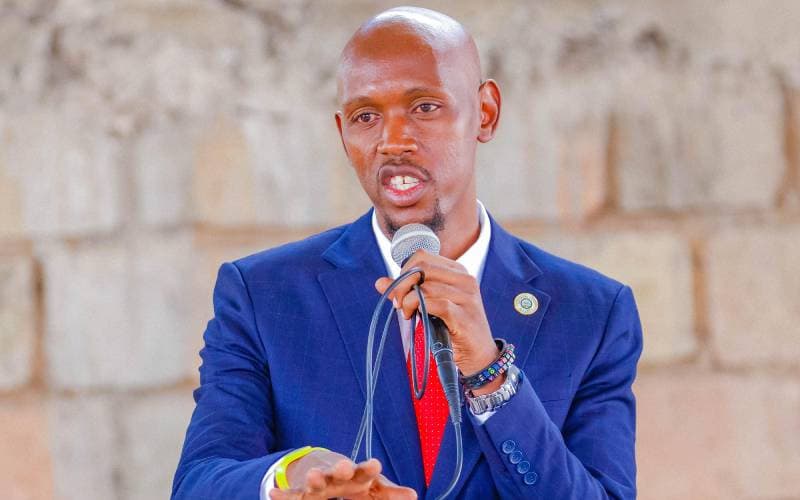We're loading the full news article for you. This includes the article content, images, author information, and related articles.
The death of a woman rescued from a Nairobi street after being unconscious for two days highlights the systemic challenges and complexities of aiding the city's vulnerable homeless population.

NAIROBI – A woman who was rescued from the streets of Nairobi’s Central Business District earlier this month after reportedly lying unconscious for two days has died while receiving medical treatment. The tragic outcome was announced by Nairobi County Chief Officer for Environment, Geoffrey Mosiria, who had initiated her rescue on Tuesday, October 7, 2025.
In a social media post late Tuesday evening, October 28, 2025, Mosiria confirmed the woman's passing. "It is sad to announce the passing of a lady we had rescued some time ago from the streets in the CBD, where she had been lying unconscious for two days without anyone offering help," he stated. The announcement marks a somber end to a story that had briefly captured public attention and sparked a city-wide conversation on civic responsibility and compassion.
The initial rescue was prompted by a distress call from a concerned citizen. Mosiria, along with a County Ambulance team from the Emergency Operations Centre (EOC), found the woman and rushed her to a hospital for immediate medical attention. At the time, Mosiria lamented the public's apparent indifference, questioning the erosion of communal empathy. "It was a heartbreaking scene, a reflection of how far we seem to have drifted from our sense of humanity," he remarked on October 7. "What happened to the upendo (love) and uzalendo (patriotism) that once defined us?"
Following the rescue, county officers attempted to contact the woman's family. According to Mosiria, a relative based in Nairobi showed little concern. However, after her story was shared on social media, family members from her village became aware of her situation and took over the responsibility for her medical care before her eventual death. "Today, I received a message from a family member confirming that she, unfortunately, passed away while undergoing treatment," Mosiria revealed on Tuesday.
This case casts a harsh light on the broader issue of homelessness and the immense challenges of intervention and rehabilitation in Kenya's capital. While the actions of individuals like Mosiria are crucial, the incident underscores the deep-seated systemic issues that leave thousands vulnerable on the streets. The exact number of homeless individuals in Kenya is difficult to ascertain due to their transient nature. A 2019 national census reported 46,639 Kenyans living on the streets, but a 2007 study by the Consortium of Street Children estimated the number of children alone to be between 250,000 and 300,000, with over 60,000 in Nairobi. These discrepancies suggest the official figures may be significantly underreported.
The causes of urban homelessness are multifaceted, stemming from family breakdowns, rural-urban migration in search of economic opportunities, and a lack of access to education and social services. Those living on the streets face a daily barrage of challenges, including poor health conditions, exploitation, abuse, and severe social stigmatization.
Rehabilitating and reintegrating street families is a complex process fraught with difficulties. Research on rehabilitation programmes in Nairobi County points to significant socio-economic, environmental, and caregiver-related challenges. Many individuals require not just shelter, but also intensive psychological support, counseling, and skills training to successfully reintegrate into society. The lack of adequate facilities and trained personnel often hampers these efforts.
Furthermore, public apprehension can be a barrier to intervention. Some citizens fear being misunderstood or even implicated in criminal proceedings if they attempt to help a stranger in distress, a sentiment echoed in online discussions following the woman's rescue. This tragic case serves as a stark reminder of the urgent need for robust, well-funded, and coordinated social support systems. It highlights the gap between individual acts of kindness and the comprehensive, long-term solutions required to address the root causes of homelessness and provide sustainable care for the most vulnerable members of Kenyan society. The identity of the woman and the specific cause of her death have not been publicly released. FURTHER INVESTIGATION REQUIRED.
Keep the conversation in one place—threads here stay linked to the story and in the forums.
Other hot threads
E-sports and Gaming Community in Kenya
Active 7 months ago
Popular Recreational Activities Across Counties
Active 7 months ago
The Role of Technology in Modern Agriculture (AgriTech)
Active 7 months ago
Investing in Youth Sports Development Programs
Active 7 months ago